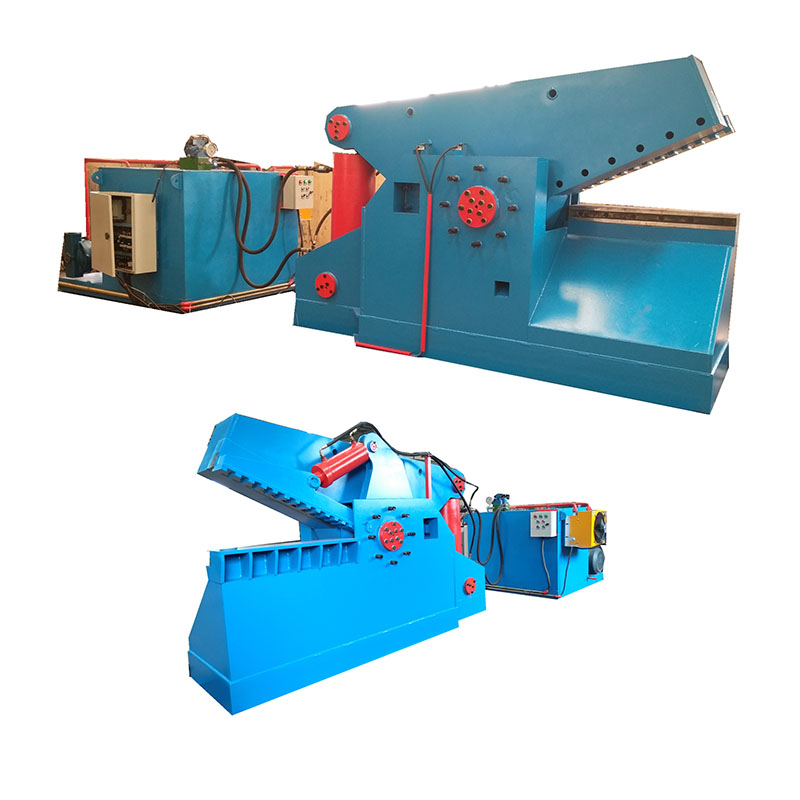
Oct . 12, 2025 13:05 Back to list
I’ve stood next to roaring presses in Hebei and quiet, meticulously kept shops in the Midwest, and to be honest, the machine that keeps showing up in the best-run yards is a hydraulic baler that doesn’t fuss. From Dafu Village, Qingyuan Town, Baoding, Hebei—the heartland for heavy recycling kit—comes a line of Metal Balers built for steel plants, scrap yards, smelters, and auto dismantlers. They bundle the ugly stuff—steel offcuts, aluminum extrusions, copper wire nests, even end-of-life car shells—into furnace-ready charges, cutting freight and speeding melt schedules.

Three things keep coming up in conversations: higher bale density for export container111s, safer hydraulics, and smarter controls. Surprisingly, even small recyclers want PLCs with fault codes and remote support now. Energy is the other big lever; variable-displacement pumps and standby modes are becoming standard, not optional.
| Parameter | Value (typical) | Notes |
|---|---|---|
| Main cylinder force | ≈ 250–500 tons | Real-world compaction depends on scrap type. |
| Bale size (L×W×H) | ≈ 300×300×(variable) to 600×600×(variable) mm | Custom dies available. |
| Bale density | Steel: 1.2–1.8 t/m³; Al: 0.8–1.1 t/m³ | Depends on moisture and feed prep. |
| Cycle time | ≈ 35–60 s | With variable pump, faster on light loads. |
| Installed power | 30–110 kW | Energy-saving standby reduces kWh/bale. |
| Certifications | ISO 9001, CE (Machinery Directive) | Manufacturer dependent. |
Advantages users mention: reliable hydraulics (less drift), wear-resistant liners (HARDOX® style), and the practical stuff—easy bale ejection and clean oil routing. Many customers say they chose Metal Balers from Hebei because of quick parts logistics across North Asia.

| Vendor | Origin | Force (≈) | Bale size options | Warranty | Lead time |
|---|---|---|---|---|---|
| OW Recycling (Y81-series) | Baoding, Hebei, China | 250–500 t | 300–600 mm square | 12–18 months | ≈ 30–60 days |
| Enerpat | UK/China | 125–500 t | Various | 12 months | ≈ 45–75 days |
| Harris | USA | 200–600 t | Custom | 12 months | ≈ 60–120 days |
From this Baoding maker you can spec bale size, feed opening, power pack (VFD or variable pump), oil heating/cooling, remote diagnostics, extra-hard liners, and auto-tying. For hotter climates, I’d add oversized coolers; for stainless, go with low-contamination paint and easy-clean sumps.
Commissioning usually includes a proof-pressure test at 1.25× rated pressure, weld NDT spot checks per AWS D1.1 practices, and a 500-cycle shakedown. It seems that once the relief valves are dialed, Metal Balers settle into a predictable rhythm.
Look for CE conformity (Machinery Directive 2006/42/EC), ISO 9001 quality systems, interlocked guards, e-stops to ISO 13850, and manuals reflecting ISO 12100 risk methods. For North America, check lockout/tagout compatibility and clear arc-flash labels.
Authoritative citations:
Latest news
Trusted Double Shaft Shredder Supplier | Durable Industrial & Recycling Solutions
NewsNov.24,2025
Double Shaft Shredder Price Explained: Global Trends, Benefits & Vendor Comparisons
NewsNov.24,2025
Expert Insights into Double Shaft Shredder Factory: Boosting Global Recycling Efficiency
NewsNov.23,2025
Leading Double Shaft Shredder Suppliers for Industrial Recycling and Waste Management
NewsNov.23,2025
Leading Double Shaft Shredder Manufacturers | Durable & Sustainable Industrial Shredders
NewsNov.23,2025
Understanding Double Shaft Shredder Machine Price: Buyers’ Guide & Global Insights
NewsNov.22,2025